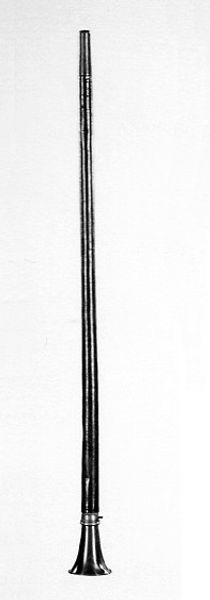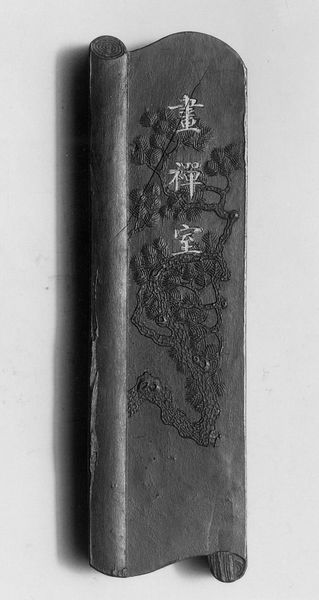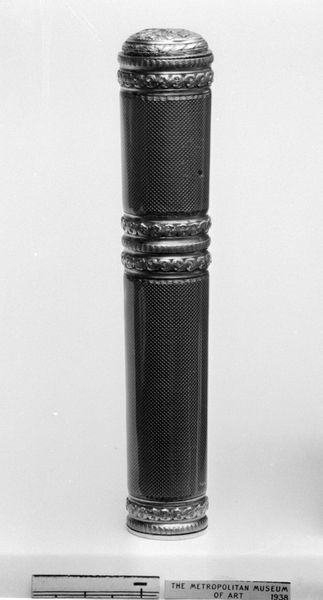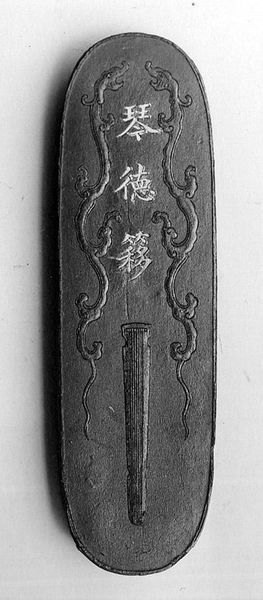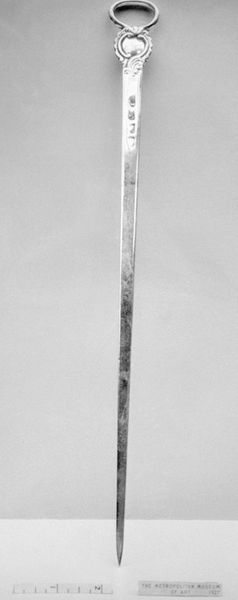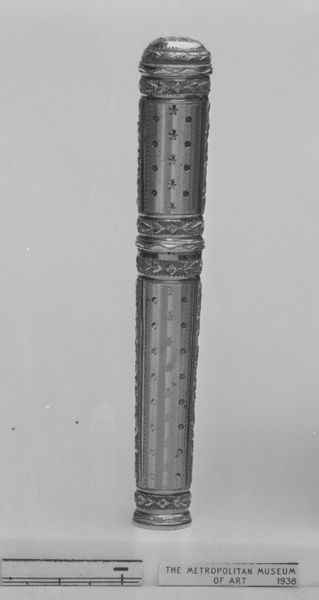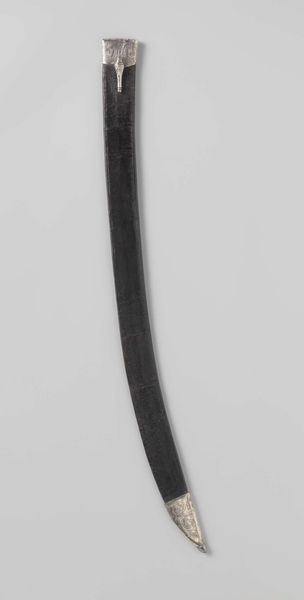
photography, wood
#
portrait
#
still-life-photography
#
sculpture
#
photography
#
close-up shot
#
black and white
#
wood
#
musical-instrument
Dimensions: W. 2 13/16 x D. 1 1/8 x L. 20 11/16 in. (7.2 x 2.9 x 52.6 cm) Sounding Length: 15 15/16 in. (40.5 cm)
Copyright: Public Domain
Editor: This is an incredible image titled "Epinette des Vosges," taken by Amant Constant Lambert sometime between the 1880s and 1890s. It's a black and white photograph of what appears to be a stringed musical instrument, currently housed at the Metropolitan Museum of Art. The close-up perspective and stark contrast give it such a formal and reverential mood. How do you interpret this photograph, beyond a simple still life? Curator: The "Epinette des Vosges" holds much more than sonic potential. This object speaks volumes about cultural memory. Think about the Vosges mountains, a region steeped in folklore and tradition. The epinette, as an instrument, carries centuries of rural music. Lambert, by isolating it, almost deifies the object, preserving an echo of cultural heritage as photography’s proliferation rapidly accelerated. Does the image evoke the silence of a museum object, or something else? Editor: I see what you mean. It's almost like he's trying to capture a fading sound, turning music into a visual icon. The choice of black and white enhances that sense of timelessness, but what about the composition? It's so simple, almost austere. Curator: Precisely. This simplicity amplifies the symbolic weight. Consider the geometric forms. The straight lines, the sharp angles—they’re visually grounding the ephemeral quality of music and aligning the folk instrument with something more eternal and unchanging. Does it recall any religious art to you? The central placement evokes devotional imagery, inviting contemplation of its cultural significance. Editor: That’s a fascinating point! The central composition and starkness do remind me of religious iconography. So, Lambert is essentially using photography to elevate a humble musical instrument to the status of a cultural relic. Curator: Exactly! And through this act, he preserves a piece of cultural memory, ensuring its continued resonance for generations. The image becomes more than just a portrait; it becomes an archive. Editor: Wow, I never would have considered all those layers! I see it now, a silent hymn of cultural endurance. Curator: It just confirms that even a still photograph can resonate deeply with history, if you learn how to look and listen with your mind's eye.
Comments
No comments
Be the first to comment and join the conversation on the ultimate creative platform.
